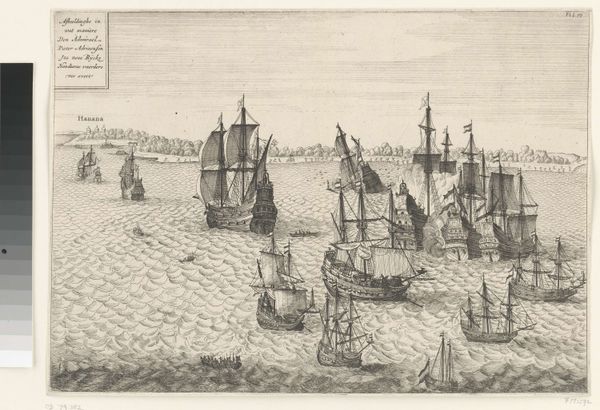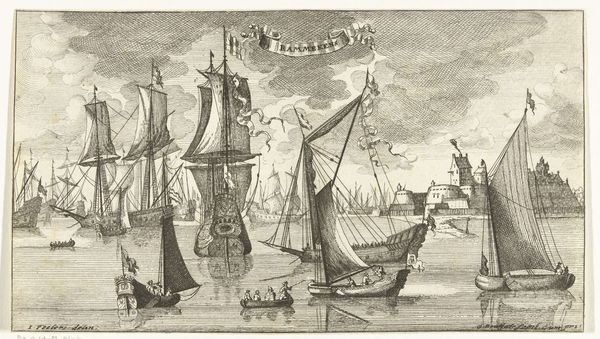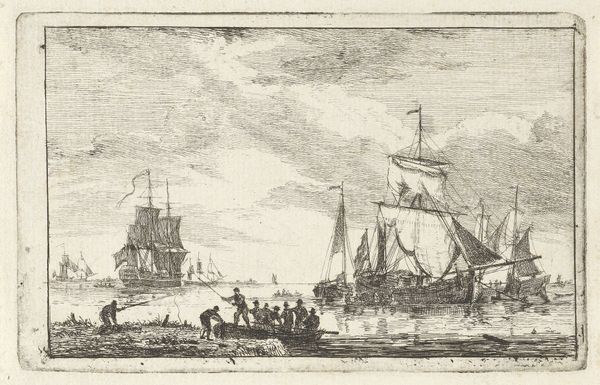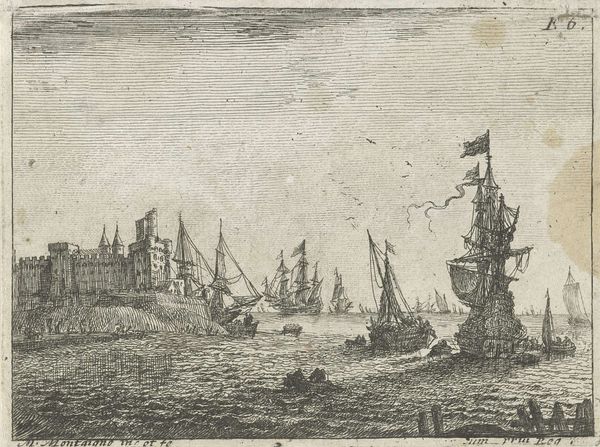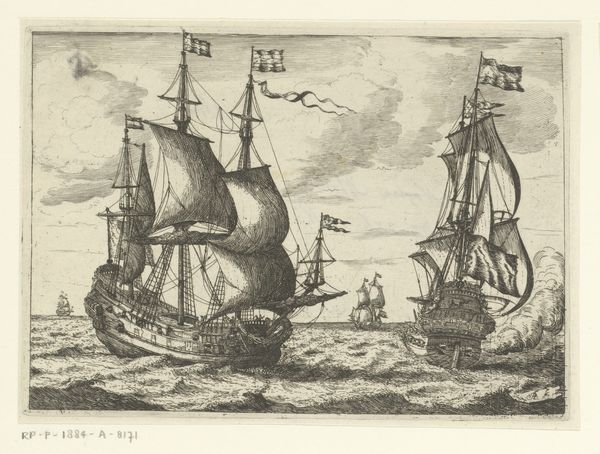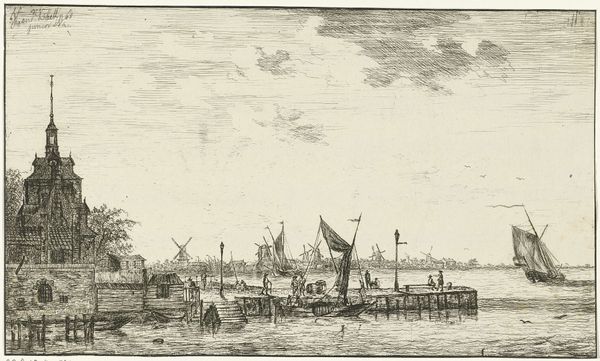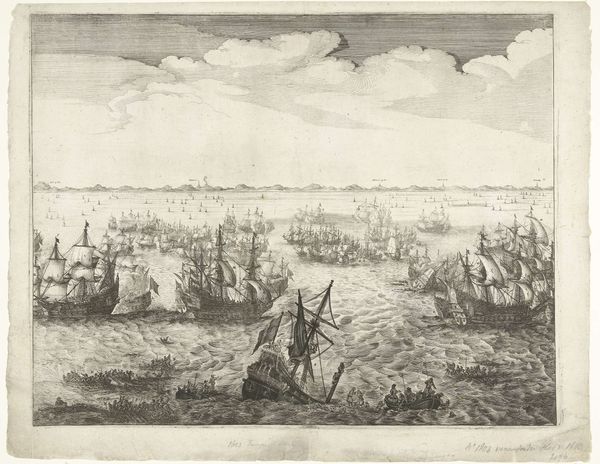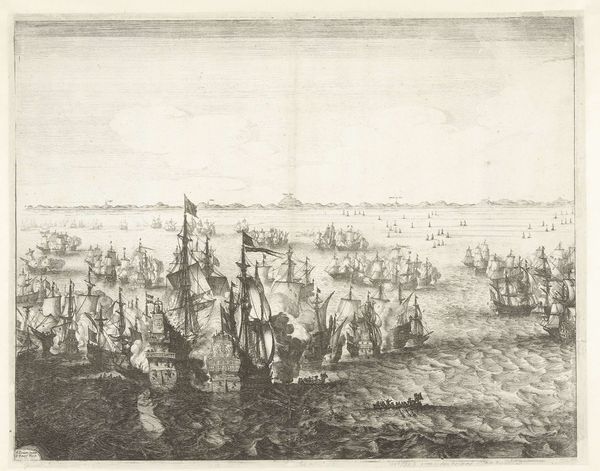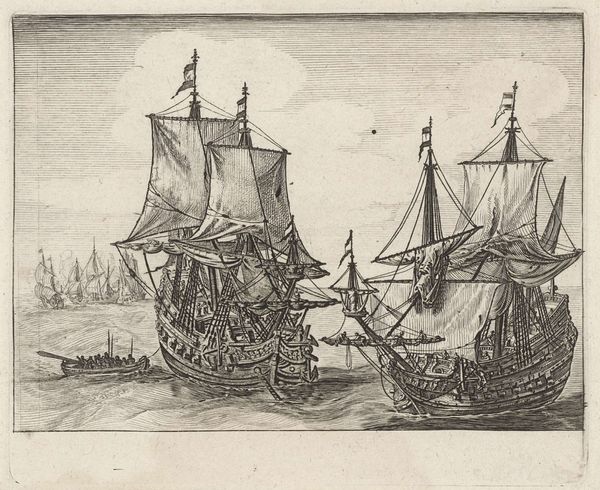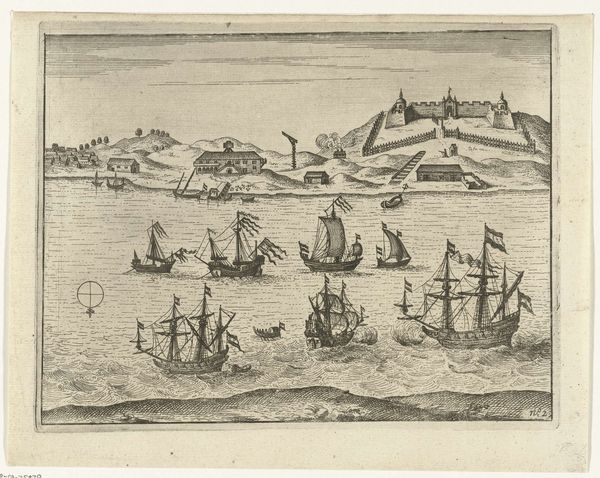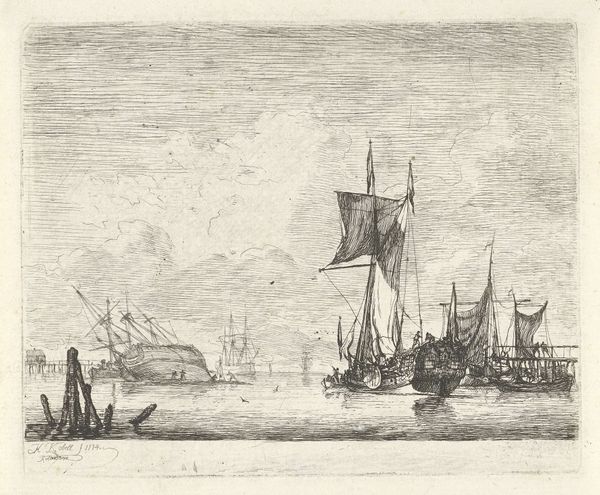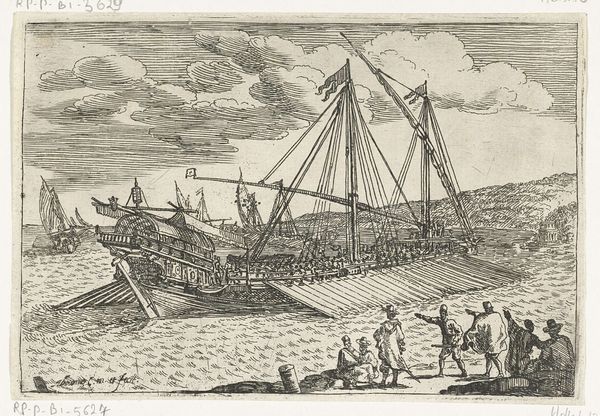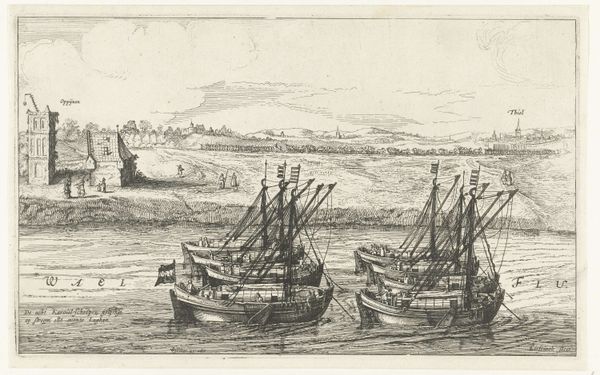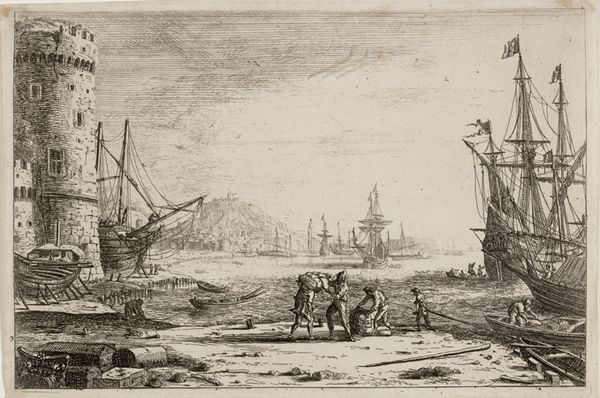
Verovering van twee Spaanse admiraalsschepen door de vloot van de WIC onder admiraal Pieter Adriaensz. Ita, 1628 1649 - 1651
0:00
0:00
print, engraving
#
dutch-golden-age
# print
#
old engraving style
#
landscape
#
cityscape
#
history-painting
#
engraving
Dimensions: height 275 mm, width 366 mm
Copyright: Rijks Museum: Open Domain
Curator: Look at this intriguing engraving titled "Capture of Two Spanish Admiral Ships by the Fleet of the WIC Under Admiral Pieter Adriaensz. Ita, 1628". Created anonymously between 1649 and 1651, it captures a very specific moment in history. Editor: It's intensely detailed, isn’t it? Almost overwhelmingly so. I immediately notice the sheer volume of ships crammed into the frame, battling amid what seems like pretty choppy waters. Curator: Absolutely. This work immortalizes a key victory for the Dutch West India Company. Remember that engravings like this served an important function—they spread news and promoted a particular narrative to the public. In this case, it highlights Dutch naval power and commercial success against their Spanish rivals. Editor: Exactly! It's important to realize that this isn't just a picture of a battle; it’s an assertion of dominance. And it carries so many complex layers about colonialism, trade, and of course, violent acquisition of wealth at the expense of so many. This isn’t just a historical scene—it’s a historical justification. Curator: You raise a vital point about justification. Images such as this reinforce the perception of Dutch maritime prowess and justify expansionist activities under the guise of legitimate trade and military endeavors. Think of the intended audience, how the view would bolster national pride... and perhaps conveniently obscure the brutalities inherent in such naval campaigns. Editor: Precisely. I think about who *doesn’t* get represented in images like these – the Indigenous populations, the enslaved people whose labor was so critical. And look at the composition – this naval conquest takes center stage against a backdrop of distant colonial territory in modern day Havana and the coast of Cuba. We are supposed to applaud this power. It demands that we ask "at what cost?" and "whose narrative?" Curator: Indeed, its propaganda value cannot be ignored. It serves as a tangible record of a crucial Dutch victory, one which secured important trade routes and reshaped colonial power dynamics in the region. The anonymous production of the artwork suggests it wasn’t about personal fame, but promoting a shared political goal. Editor: Seeing the technical skill in rendering these ships amidst a vast scene reminds me that we must acknowledge these historical complexities rather than simply accept a triumphal depiction at face value. Curator: This image reminds us how vital it is to question both the subject matter of the work, as well as the underlying purposes of its creation and distribution. Editor: Right. What stories are amplified, and which remain submerged?
Comments
No comments
Be the first to comment and join the conversation on the ultimate creative platform.
